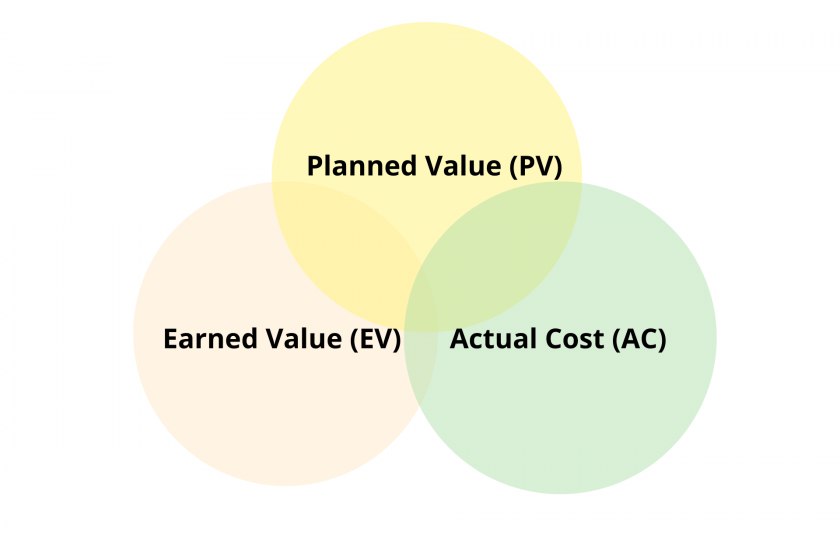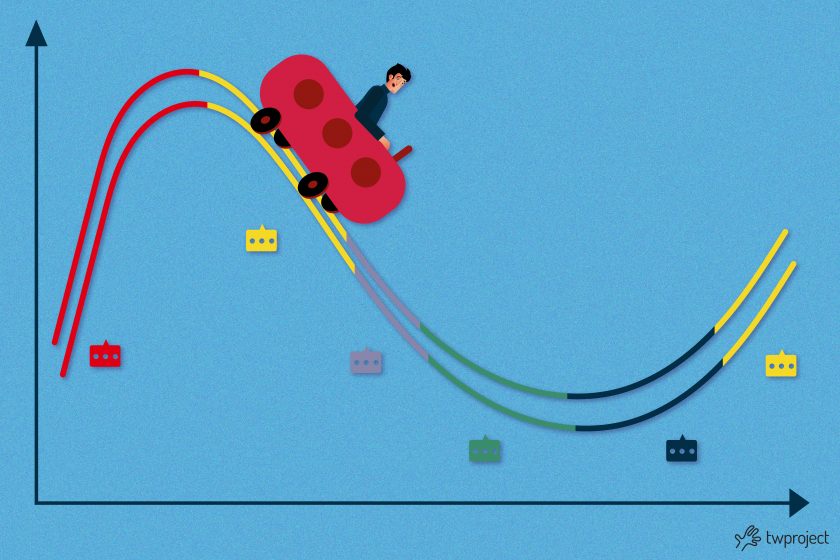Earned Value is a popular method of monitoring a project’s progress with a quantifiable figure.
This helps project managers to ensure they meet their project’s budget and finish on time.
This article will explore how Earned Value works and how to make the most out of it.
CONTENT
What is Earned Value (EV) in project management?
Simply put, Earned Value helps to understand – in numbers – how well a project is running.
It involves considering three important factors:
- What was planned
- What was actually accomplished
- How much was spent
Here is the calculation of Earned Value, broken down into three parts:
- Planned Value (PV): This is what is expected to be spent on the planned work.
- Actual Cost (AC): This metric represents the amount of money spent on the work done so far.
- Earned Value (EV): It is calculated starting from the PV and multiplying it by the percentage of project completion.
A practical example: You are planning a party with a budget of 500 euros. After a week of planning, half of the activities worth 200 euros were accomplished, but 150 euros were spent.
PV: 500 euro (initial budget)
EV: 200 euro (value of what has been accomplished)
AC: 150 euro (what was actually spent).
Formula: EV = % of work completed * PV
In this case, tasks were 50% completed and the planned value is €500, so EV = 0.5 * €500 = €250.
Benefits of using Earned Value in project management
1. Risk forecasting and timely action
A major perk of using EV is that it helps project managers foresee risks and take timely action. This benefit is crucial in ensuring that emerging problems do not jeopardize the project’s success.
For example, a risk of cost overruns can be identified through this method.
Let’s take a look at how Earned Value facilitates this process.
Risk Identification: The Earned Value method provides a thorough and quantifiable overview of project status through three key metrics: Planned Value (PV), Actual Cost (AC), and Earned Value (EV).

The combination of these indicators helps calculate various performance indices, such as the Cost Performance Index (CPI) and Schedule Performance Index (SPI), which help identify potential risks.
- Cost Performance Index (CPI): This indicator measures the cost efficiency of a project. It is calculated by dividing the EV by AC (CPI = EV / AC). A CPI below 1 suggests that costs exceed the planned budget, indicating a risk of cost overshooting.
- Schedule Performance Index (SPI): This indicator measures the efficiency of a schedule. It is calculated by dividing the EV by PV (SPI = EV / PV). An SPI less than 1 indicates that the project is behind schedule, signaling a risk of delays.
Trend analysis: Project managers can constantly monitor these indices to spot negative trends over time.
If, for example, the CPI begins to fall below the acceptable threshold, it is a sign that costs are becoming an issue. Likewise, a falling SPI may indicate that the project is not meeting the schedule.
Timely action: With this information, you can take early action to mitigate risks before they become problematic.
Actions that can be taken include:
- Budget reevaluation: If cost overruns are observed, the project manager can revise the budget, reduce unnecessary expenses, and reallocate resources to improve efficiency.
- Planning review: If the project is running behind schedule, the project manager can revise the schedule to expedite critical activities, optimize resources, and reorganize priorities.
- Communication with stakeholders: Proactive risk analysis allows stakeholders to be informed timely about potential problems and corrective measures, maintaining transparency and trust.
- Adoption of corrective measures: Based on the Earned Value data, specific strategies can be implemented to tackle the issues identified. These may include adjustments in resource management, changes in work processes, or introducing new technologies.
2. Efficiency and ROI
EV helps project managers spot discrepancies and correct them, improving project efficiency and return on investment (ROI).
For example, if a project’s EV is significantly higher than the AC, this indicates high efficiency and positive ROI.
3. Realistic planning of the project
This method allows project managers to plan realistically and set a reasonable budget and time frame.
For example, suppose a project is expected to cost $100,000 and run for six months. In that case, EV can help monitor whether the project effectively meets these parameters and ensure accuracy in budget planning.
4. Performance measurement
EV provides an objective framework for monitoring and measuring a project’s progress. It also helps to gauge work progress against a baseline plan by relating technical, time, and cost performance.
Performance indicators derived from Earned Value provide a clear view of the areas where the project is excelling or suffering.
When is it important to use Earned Value?
Here are some situations in which the use of Earned Value becomes key:
· When it is necessary to request more funding: Earned value analysis can be a valuable tool to support a request for additional funding. Showing how much work has been successfully completed and how much money has already been spent provides evidence of the need for additional funding to complete the project.
· When it is necessary to show progress to stakeholders: Sometimes, stakeholders prefer to measure projects in terms of earned value. In this case, Earned Value is the best method of showing progress. By proving how much work has been completed and how much value has been generated, it is possible to show that the project is on track and achieving its goals.
· When troublesome areas must be identified, EV analysis can help pinpoint troublesome areas that are falling further behind the project forecast. By examining the difference between planned and actual value, areas, where activities are suffering, can be identified. This information can then be used to revise the project plan to improve performance.
· When it is necessary to implement changes to the project plan: If the project is not progressing as planned, Earned Value analysis can help adjust the project plan. By comparing planned value to actual value, it is possible to identify areas where work needs to be accelerated or slowed down to meet goals.
· When it is necessary to conduct an accurate project cost forecast: Earned Value analysis can be a convenient tool for generating an accurate forecast of project costs.
This allows a more accurate estimate of future expenditures to be obtained. This information can then be used to decide how best to allocate resources within the project.
Measuring Earned Value with Twproject
We examined how performance calculation is critical to keeping projects on time and budget, but how can it be done correctly?
Using a spreadsheet might be one solution, but collecting all the data and calculating each equation could become a cumbersome endeavor. Therefore, project management software such as Twproject is the best solution.
Twproject offers a system that can automatically process data in real-time to provide the necessary information and monitor the performance of any kind of project.
Whenever a team member updates their status, the data is modified and shared, allowing the project manager to make decisions based on actual performance easily.
To examine the data more deeply, Twproject allows you to quickly generate reports on any variable: cost, time, workload, and more. These reports can be easily shared with stakeholders, keeping everyone up to date.
Thanks to Twproject, it will be possible to calculate Earned Value and monitor planned and total costs, as well as plan and schedule a project in all its individual elements.




